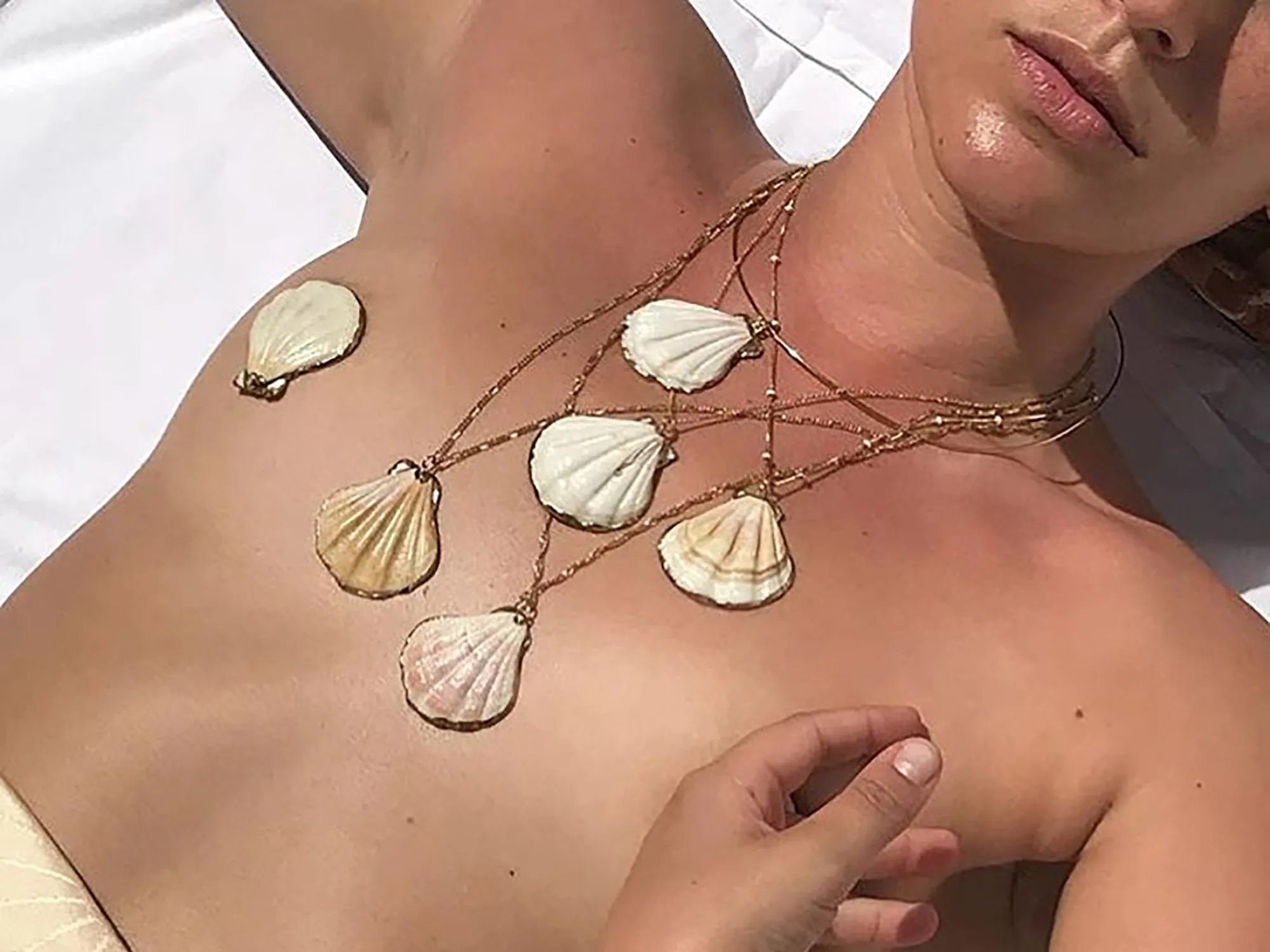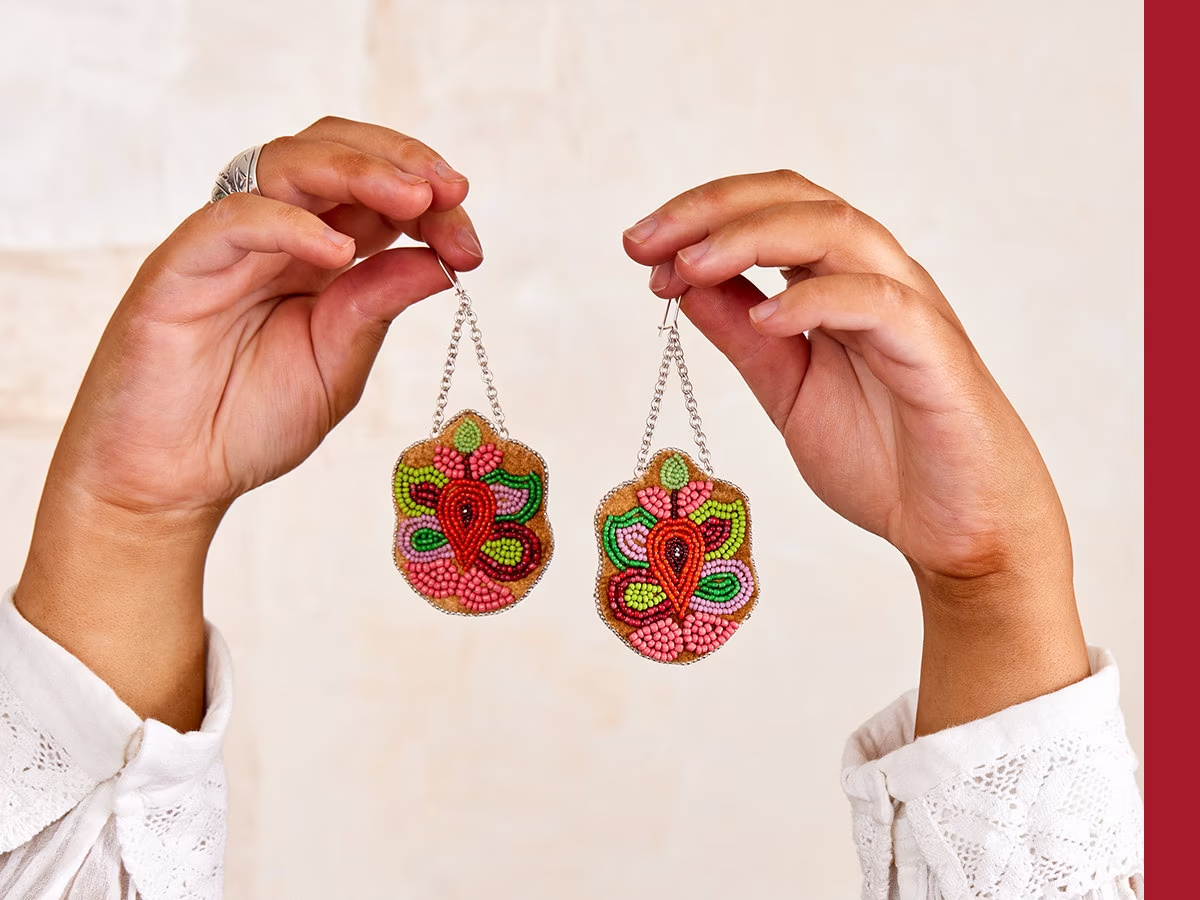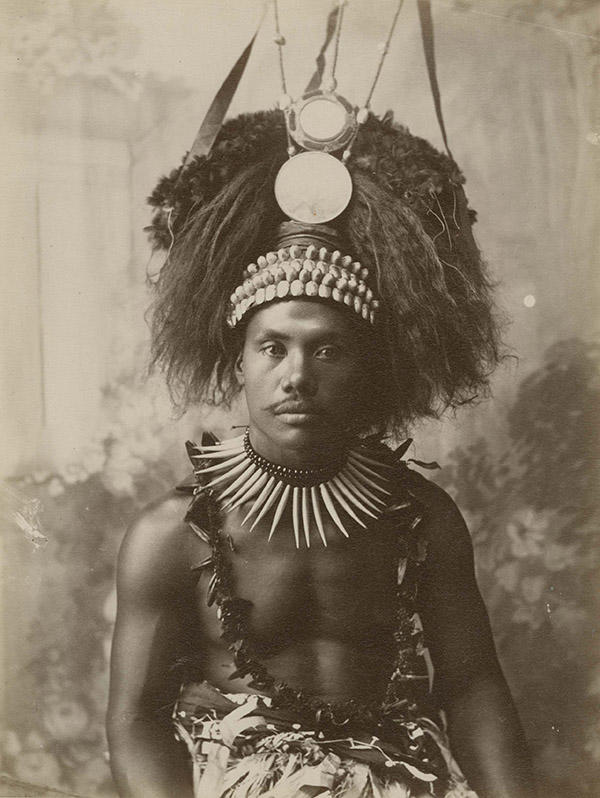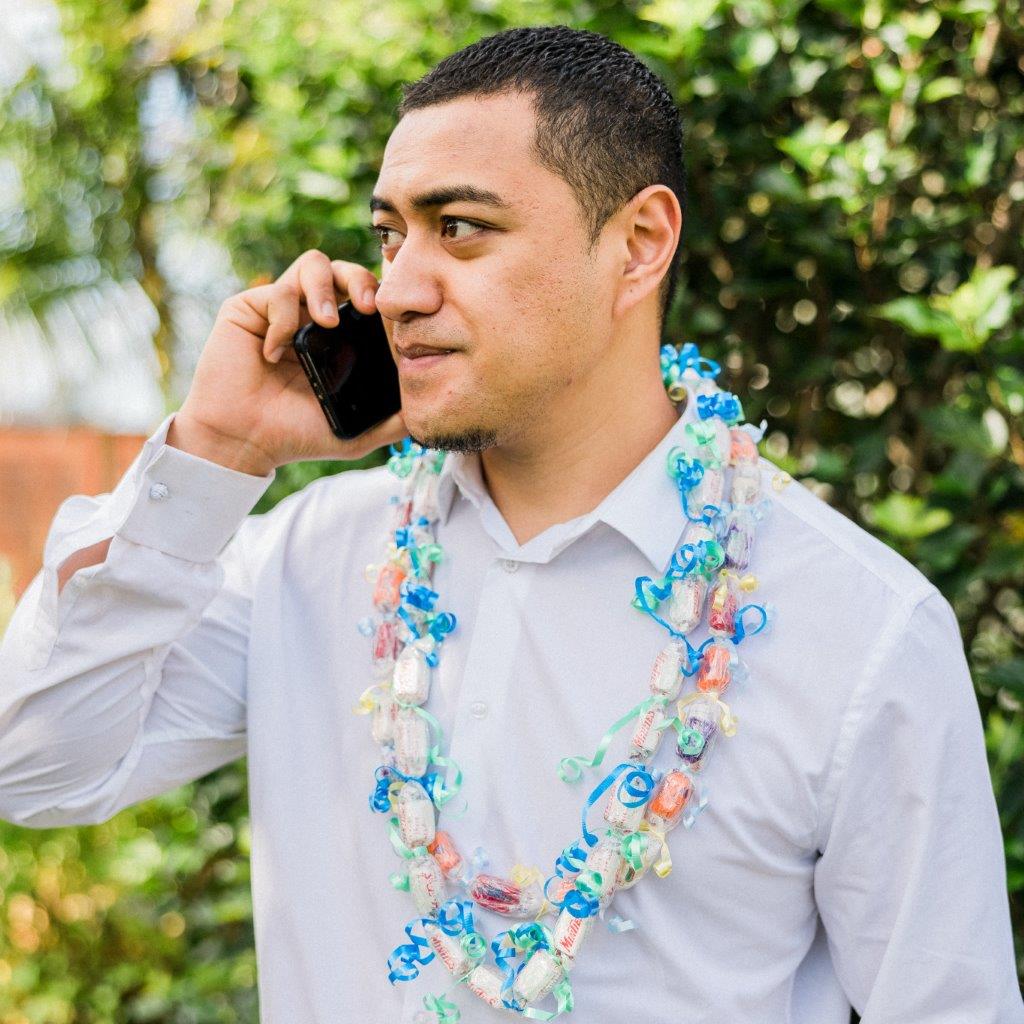Oceania, a vast and diverse region encompassing the islands of the Pacific Ocean, is renowned for its rich cultural heritage and distinctive artistic expressions. One of the most captivating aspects of Oceania's cultural tapestry is its jewelrytraditions. From intricate shell necklacesto intricate carved pendants, the jewelry in Oceaniareflects the deep-rooted beliefs, social hierarchies, and artistic prowess of its indigenous communities.
Cultural Significance Of Jewelry
Jewelry holds immense cultural significance in Oceania. It's more than just adornment; it's a symbol of identity, spirituality, and social status. Different materials used for crafting jewelry have various connotations across different islands. For instance, in many cultures, shells are regarded as symbols of fertility, while feathers are associated with spiritual connection.
Materials And Techniques
Shell And Pearl Adornments
Shell jewelryis a cornerstone of Oceania's ornamentation traditions. Cowrie shells, in particular, are commonly used in necklaces, bracelets, and headpieces. They're often woven into intricate patterns using natural fibers. The lustrous beauty of pearls also holds a special place in Oceania's jewelry-making heritage, with pearl farming being a significant economic activity in some regions.
Wood Carvings
Wood is another primary material utilized in crafting jewelry in Oceania. The art of wood carving is deeply embedded in the culture, producing stunning pendantsand amulets. These carvings often depict mythological figures, ancestral spirits, or symbols of protection.
Feathers And Fiber
Feather jewelry is especially prominent among the indigenous cultures of Papua New Guinea and the Solomon Islands. Vibrant feathers are meticulously arranged to create intricate headdresses and necklaces. Additionally, natural fibers like coconut husk and plant leaves are woven into elaborate designs, producing lightweight and durable adornments.
Spiritual Beliefs
Jewelry in Oceania is intricately linked with spiritual beliefs. Many pieces are created to connect wearers with their ancestral spirits or deities. Specific designs, patterns, and materials hold spiritual meanings that often remain undisclosed to those outside the community.
Social Hierarchy
The type and complexity of jewelry worn also signify a person's social status. Elaborate pieces are reserved for leaders, warriors, and other esteemed members of society, while simpler designs are worn by the general population.
Traditional Vs. Contemporary
Preservation Of Traditions
Despite the influences of modernity, Oceania's jewelry traditions persist. Many artisans and communities actively strive to preserve and pass down traditional techniques and designs to younger generations, ensuring the continuity of this intricate art form.
Contemporary Adaptations
In recent years, there's been a growing trend of merging traditional techniques with contemporary designs. This fusion allows for the creation of unique pieces that honor cultural heritage while appealing to modern tastes.
Economic And Cultural Impact
Economic Sustainability
Jewelry-making in Oceania contributes significantly to local economies. Artisans often rely on the sale of their creations to support themselves and their families. In regions where tourism is prominent, these crafts also serve as sources of income.
Largest Businesses In Australia's Watch And Jewelry Retail Sector
Retailers in the industry sell exquisite or fashionable jewelry and watches. Products created with precious metals or precious and semiprecious stones include fine jewelry and watches. Retailers of fashion jewelry provide items composed of non-precious metals, stones, glass, plastic, or wood. The industry excludes department stores, general clothes retailers, and online-only merchants.
Four businesses, including Prouds Jewellers Pty Limited, Richemont Australia Pty Limited, Michael Hill International Limited, and AD Astra Holdings Pty Limited, are covered by IBIS World in the Watch and Jewellery Retailing in Australia sector.
Cultural Resilience
The enduring practice of jewelry-making showcases the resilience of Oceania's cultures against historical adversities. By continuing to create and wear traditional jewelry, communities assert their cultural identity and assert their presence on the global stage.
Notable Jewelry Styles By Region
Polynesia
Polynesia, with its scattered islands and vibrant cultures, boasts a wide array of jewelry styles. The Maori people of New Zealand are renowned for their intricate bone and jade carvings, often fashioned into pendants called "taonga." In Hawaii, the "lei" is a well-known adornment made from flowers, shells, or feathers, symbolizing loveand respect.
Melanesia
Melanesia's jewelry is characterized by its diversity and use of natural materials. The Solomon Islands, for instance, are famous for their shell moneynecklaces, which serve as a form of currency and status symbols. The Sepik River region in Papua New Guinea is celebrated for its elaborate wooden carvings that are used as body adornments during rituals.
Micronesia
In Micronesia, jewelry often holds deep cultural significance. The Yapese people are renowned for their stone money discs, which were traditionally used as a form of currency and are still considered highly valuable. Shell necklaces and bracelets are also prevalent in this region, with designs varying from island to island.
Cultural Challenges And Revival Efforts
Cultural Appropriation
Oceania's cultural heritage, including its jewelry traditions, has faced challenges from cultural appropriation. Non-indigenous individuals and companies have at times exploited traditional designs without proper understanding or respect for their meanings.
Revival And Education
To counter such challenges, various initiatives have been launched to educate both locals and outsiders about the significance of Oceania's jewelry traditions. Artisans and cultural organizations collaborate to ensure that the stories behind these adornments are preserved and shared accurately.
Sustainable Practices And Conservation
Environmental Concerns
As demand for certain materials increases, concerns about sustainability arise. For example, overharvesting shells for jewelry production can harm marine ecosystems. Efforts are being made to promote responsible sourcing and environmentally friendly practices.
Empowerment Through Jewelry
Many indigenous communities are finding empowerment through jewelry-making. By embracing their cultural heritage and sharing it through their creations, artisans are not only preserving traditions but also asserting their identity and contributing to community development.
Future Prospects And Global Awareness
Increasing Global Interest
As the world becomes more interconnected, interest in Oceania's jewelry traditions grows. Cultural events, exhibitions, and online platforms provide opportunities for a global audience to appreciate and acquire these unique adornments.
Balancing Modernization And Tradition
The challenge lies in striking a balance between modernization and tradition. While contemporary adaptations help keep the art form relevant, it's essential to ensure that the core values and meanings of these traditions remain intact.
Cultural Exchange And Collaboration
Cross-Cultural Influences
Oceania's jewelry traditions have not existed in isolation; they have often been influenced by interactions with other cultures. European explorers, traders, and colonizers introduced new materials like metals, glass beads, and gemstones, which were incorporated into indigenous designs, resulting in unique fusion pieces.
Contemporary Collaborations
In recent years, collaborations between indigenous artisans and contemporary jewelry designers have emerged. These collaborations blend traditional techniques with modern aesthetics, fostering cultural exchange and creating innovative pieces that appeal to a global market.
Rites Of Passage
Jewelry plays a crucial role in various rituals and ceremonies within Oceania. From birth to marriage and death, these adornments mark important life transitions. Elaborate jewelry is often worn during ceremonies to honor ancestors, deities, and spirits, amplifying the spiritual connection of the wearer.
Healing And Protection
Certain jewelry items are believed to possess healing and protective properties. Talismans and amulets are worn to ward off negative energies and illnesses, showcasing the deeply ingrained belief in the power of these adornments to influence one's well-being.
Lessons From Oceania's Jewelry Traditions
Sustainability And Respect
Oceania's jewelry traditions teach us valuable lessons about sustainability and respect for the environment. Indigenous communities have long practiced responsible sourcing and utilization of natural materials, highlighting the importance of maintaining a harmonious relationship with nature.
Cultural Identity And Resilience
The preservation and continuation of jewelry traditions in Oceania underscore the resilience of indigenous cultures against the pressures of modernization. These traditions serve as a powerful tool for asserting cultural identity and pride in the face of historical challenges.
Preserving The Legacy
Documentation And Education
To ensure the legacy of Oceania's jewelry traditions endures, documentation and education are paramount. Recording the stories behind each piece, the techniques used, and the cultural significance can help future generations appreciate and continue these practices.
Support For Artisans
Supporting indigenous artisansthrough fair trade practices, workshops, and market access is essential for the survival of these traditions. Economic empowerment not only benefits individual artisans but also contributes to the overall cultural vitality of their communities.
Envisioning The Future
Oceania's jewelry traditions are far from static; they continue to evolve while honoring their roots. The future holds exciting possibilities for the fusion of tradition and innovation, further expanding the appreciation and understanding of these adornments on a global scale.
Embracing Diversity
Oceania's jewelry traditions highlight the immense diversity within the region. Each island, tribe, and community has its unique styles and stories to share. Embracing this diversity fosters cross-cultural understanding and appreciation, enriching the global tapestry of human heritage.
A Cultural Odyssey
Oceania's jewelry traditions represent a treasure trove of cultural diversity, artistic ingenuity, and profound symbolism. From the lustrous shells of the Pacific to the intricate wood carvings of Melanesia, these adornments encapsulate the essence of indigenous communities across the vast expanse of the Pacific Ocean.
Through this journey, we've delved into the materials, techniques, symbolism, and significance of Oceania's jewelry. We've witnessed how these adornments bridge generations, mark important life events, and serve as conduits to ancestral spirits. We've also examined the challenges and opportunities that lie ahead in preserving and evolving these traditions.
As we conclude this exploration, it's important to continue our quest for knowledge and appreciation. For those interested in delving deeper into the rich tapestry of Oceania's cultures, Jane Resture's Oceania Archiveoffers a wealth of information. This comprehensive resource provides insights into the history, art, traditions, and diverse communities that shape Oceania's cultural landscape.
In our globalized world, understanding and valuing the jewelry traditions of Oceania is a testament to our commitment to preserving cultural heritage and fostering cross-cultural connections. Let us celebrate the artisans, communities, and stories behind these adornments, ensuring that their brilliance continues to shine brightly in the annals of human history.
A Call For Cultural Respect And Collaboration
Oceania's jewelry traditions beckon us to embark on a journey of cultural exploration and respect. They remind us that beneath the surface of adornments lies a deep well of history, spirituality, and communal bonds. These traditions aren't just relics of the past; they are living expressions of identity and resilience.
As we navigate the complexities of the modern world, Oceania's jewelry traditions offer valuable lessons. They teach us the importance of sustainable practices, responsible sourcing, and the harmonious relationship between humans and nature. They inspire us to uphold cultural diversity and protect indigenous knowledge.
In this age of connectivity, let us seize the opportunity to collaborate and learn from indigenous artisans. By engaging in fair trade practices and supporting community-led initiatives, we contribute to the preservation of these time-honored traditions. Let us recognize that through mutual respect and exchange, we can create a global tapestry woven with the threads of cultural understanding.
As we celebrate the beauty and significance of Oceania's jewelry, let us commit ourselves to a future where these traditions thrive. May they continue to inspire creativity, foster connections, and serve as a bridge between continents, generations, and hearts.
People Also Ask
What Jewellery Can Go In The Ocean?
While certain types of jewelry can withstand exposure to ocean water, it's essential to consider the materials and construction of the jewelry. Generally, jewelry made from stainless steel, titanium, or solid goldcan handle being submerged in the ocean without significant damage or tarnishing. These materials are more resistant to corrosion from saltwater.
However, it's advisable to remove jewelry with gemstones, pearls, or delicate materials before going into the ocean. Saltwater and sand can potentially damage the stones or settings, and the force of the waves might lead to accidental loss.
Why Do Samoans Wear Necklaces?
In Samoan culture, wearing necklaces holds deep cultural and social significance. The most iconic Samoan necklace is the "ula," which is made from polished sections of aromatic tree nuts or seeds strung together. Samoans wear these necklaces for various reasons:
- Symbolism:Ula necklaces are often given as gifts to symbolize love, respect, and honor. They serve as tokens of appreciation in relationships and are exchanged during significant life events.
- Status and Identity:The wearing of an ula can denote a person's social status, achievements, or roles within the community. Different styles of necklaces might indicate different statuses or roles.
- Ceremonies and Rituals:Ula necklaces are an integral part of Samoan ceremonies and rituals, such as weddings, funerals, and other cultural events. They hold spiritual significance and connect the wearer to their ancestors and traditions.
What Cultures Use Jewelry?
Jewelry has been a fundamental part of human culture for millennia, and various cultures around the world use jewelry for a wide range of purposes. Some cultures that have rich jewelry traditions include:
- African Cultures:Many African societies use jewelry for adornment and symbolism. Intricate beadwork, metalwork, and shell jewelry are prominent in African cultures.
- Indian Culture:India has a long history of using jewelry as an essential part of weddings, festivals, and religious ceremonies. Gold and gemstone jewelry are highly valued.
- Native American Cultures:Native American tribes across North America have diverse jewelry traditions that incorporate materials like turquoise, silver, and shell.
- Middle Eastern and Arabian Cultures:Jewelry is highly valued in these cultures, often symbolizing wealth, status, and protection. Elaborate gold and gemstone jewelry is common.
- East Asian Cultures:In countries like China and Japan, jewelry is often deeply rooted in cultural and spiritual practices. Jade, pearls, and intricate metalwork are prevalent.
- Polynesian and Pacific Island Cultures:As discussed earlier, various Pacific Island cultures, including Polynesian, Melanesian, and Micronesian, have distinct jewelry traditions using materials like shells, feathers, and wood.
Conclusion
In the vast expanse of the Pacific, Oceania's jewelry traditions form a shimmering tapestry woven with threads of cultural richness and human connection. From the intricate craftsmanship to the profound symbolism, these adornments transcend mere aesthetics, offering glimpses into the depths of indigenous histories and beliefs.
As we traverse the diverse landscapes of Oceania, we find that jewelry is more than just ornamentation; it's a conduit to the sacred, a celebration of identity, and a testament to resilience. The shell necklaces, wood carvings, feather headdresses, and more, each piece whispers stories of generations past and beckons to generations yet to come.
In our shared journey to understand and appreciate Oceania's jewelry traditions, we've encountered the challenges and triumphs that shape their present and future. We've learned the importance of cultural respect, sustainability, and collaboration. By embracing these lessons, we can ensure that the legacy of Oceania's jewelry continues to shine brightly across the tides of time.
As we bid farewell to this exploration, let us carry with us the beauty, wisdom, and inspiration that Oceania's jewelry imparts. It's a legacy that transcends borders, generations, and cultures a legacy that invites us all to celebrate the artistry of the human spirit and the enduring power of cultural heritage.



